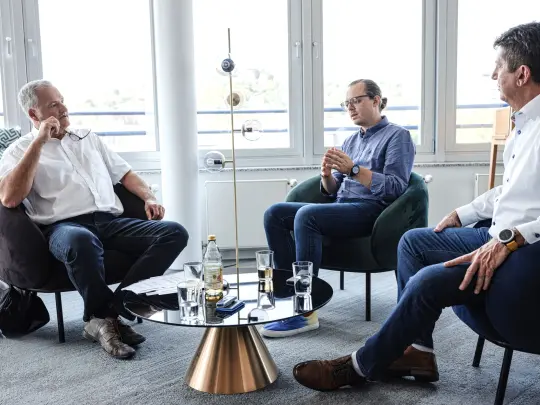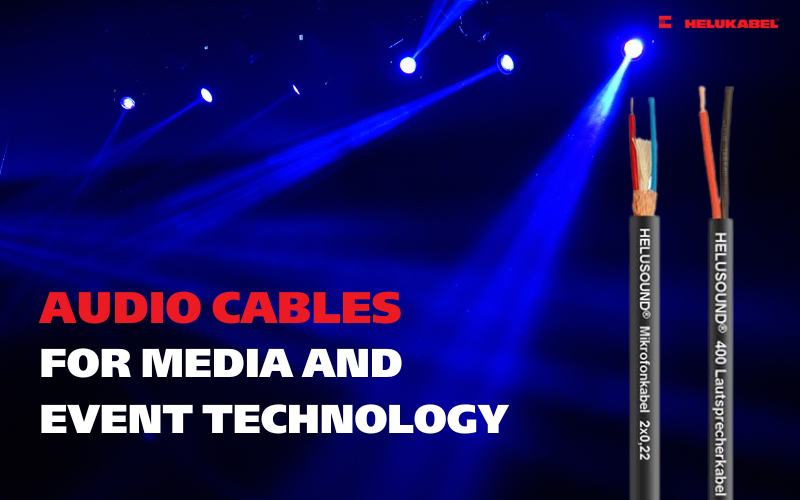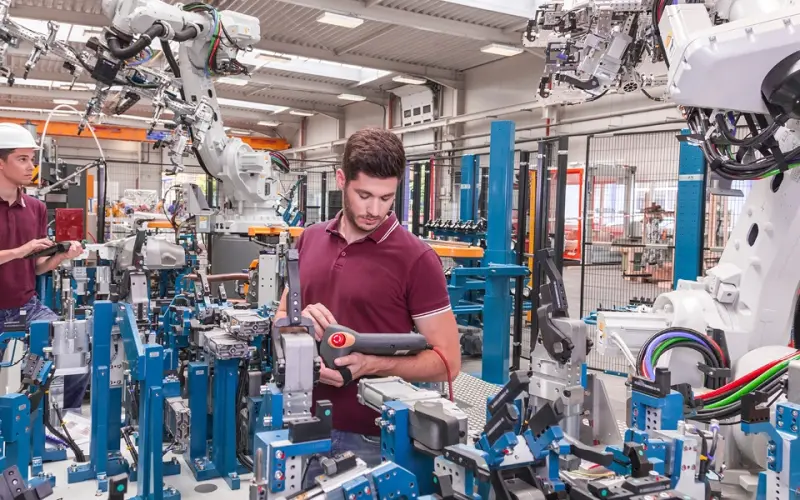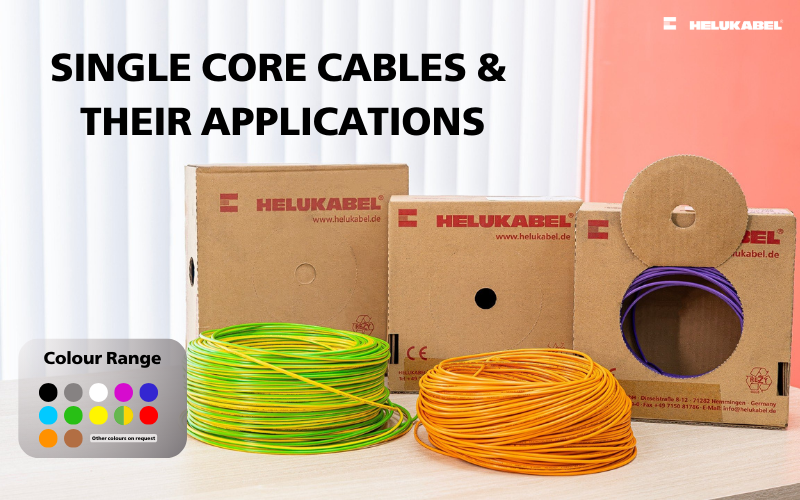Bàn về thị trường xe điện - Góc nhìn của các chuyên gia
Các chuyên gia của chúng tôi tại HELUKABEL đưa ra các góc nhìn, nhận định, và dự đoán về xu hướng của xe điện trong những năm sắp tới.
Tương lai của thị trường xe điện là một chủ đề mà ai cũng đang nhắc đến. Các ông đã tham gia vào xu hướng lớn này bao lâu rồi?
Jürgen Schenk (JS): Tôi đã theo dõi sự chuyển đổi của ngành công nghiệp ô tô trong 15 năm qua và tin rằng xe điện sẽ là tương lai của thị trường ô tô.
Robert Stanek (RS): Tôi đã quan tâm đến chủ đề này gần mười năm, đặc biệt là khi nào và bằng cách nào xe điện sẽ trở nên khả thi về mặt kinh tế.
Uwe Schenk (US): Điều thu hút tôi là sự đa dạng của các ứng dụng trong lĩnh vực này, vượt xa khỏi phạm vi của xe ô tô. Chẳng hạn, tại HELUKABEL , chúng tôi đang nghiên cứu các công nghệ sạc nhanh cho xe buýt điện và các giải pháp cho ứng dụng hàng hải.
Thị phần toàn cầu hiện nay của xe điện trong giao thông vận tải là bao nhiêu?
RS: Thị trường xe điện lớn nhất là Trung Quốc. Khoảng 10% số xe ở đó sử dụng pin. Tại EU, con số này vào khoảng từ 3 đến 5%, còn ở Mỹ là khoảng 3%.
P3 cho rằng sự chuyển đổi sang xe điện là một yêu cầu toàn diện, không chỉ đơn thuần là điện khí hóa các phương tiện. Ông có thể cho một ví dụ không?
RS: Vâng, tất nhiên rồi. Chúng ta hãy lấy cơ sở hạ tầng sạc làm ví dụ. Khi chúng tôi, tại P3, chứng nhận một chiếc xe cho thị trường châu Âu, chúng tôi sẽ kiểm tra nó cùng với tất cả các mạng lưới sạc chính tại châu Âu. Trong một thế giới lý tưởng, hệ thống định vị sẽ tính toán lộ trình với các điểm sạc tốt nhất và thời gian sạc nhanh nhất. Tuy nhiên, trên thực tế, vẫn chưa có một mạng lưới "plug & charge" (cắm và sạc) thân thiện và thống nhất cho người dùng ở châu Âu. Vì có quá nhiều nhà cung cấp khác nhau tùy thuộc vào quốc gia, chúng tôi cần vài chục thẻ sạc khác nhau cho các bài kiểm tra này. Và điều này sẽ không thay đổi cho đến khi có một tiêu chuẩn sạc hài hòa và tất cả các phương tiện đáp ứng cùng một yêu cầu kỹ thuật.
Khi nào thì tiêu chuẩn sạc có thể được đưa ra và thị trường đang thay đổi như thế nào
RS: Nhiều công ty như Allego hoặc EnBW ở Đức đã tham gia vào việc xây dựng cơ sở hạ tầng hơn 10 năm nay. Hiện nay, độ bao phủ mạng của họ rất tốt và họ đã lắp đặt phần cứng thế hệ thứ hai hoặc thứ ba. Ngoài ra, còn có nhiều công ty khác đang tham gia vào thị trường. Ví dụ, Tập đoàn Tank & Rast có các trạm dịch vụ tại những vị trí thuận lợi dọc theo các tuyến đường cao tốc và, cùng với đối tác IONITY, họ vận hành các trạm sạc tại gần 80 trong số đó. Nhưng các tập đoàn toàn cầu như Google cũng đã nhận ra tiềm năng kinh doanh ở đây. Thị trường đang trong quá trình hợp nhất và có rất nhiều giao dịch đang diễn ra. Các doanh nghiệp đang mua lại các nhà cung cấp khác và các công ty cũng đang đầu tư mới vào thị trường này.
Theo ông, ngành công nghiệp cung cấp có thể làm gì để đẩy nhanh sự chấp nhận chính thống của xe điện?
JS: Sự hợp tác giữa các nhà sản xuất xe, ngành công nghiệp cung cấp và các nhà vận hành trạm sạc ở Đức rất tốt. Nhờ có các kế hoạch phát triển mới, đầu tư đang gia tăng. Đúng là sự cạnh tranh đã dẫn đến nhiều hệ thống không đồng nhất ở Đức, nhưng vấn đề này sẽ tự giải quyết theo thời gian. Ngành công nghiệp Đức có đủ chuyên môn để xây dựng một hệ thống tổng thể hiệu quả.
HELUKABEL gặp phải những thách thức nào?
US: Cáp sạc của chúng tôi truyền tải rất nhiều năng lượng trong không gian hạn chế. Sản phẩm của chúng tôi do đó phụ thuộc vào công nghệ dẫn điện tốt và các vật liệu cách điện xuất sắc có khả năng chịu được nhiệt độ cao trong dây cáp.
Các yếu tố hạn chế của dây cáp sạc là gì?
US: Chủ yếu là bị giới hạn bởi các thiết bị ngoại vi của xe và loại phích cắm. Chúng tôi cũng đã đạt đến giới hạn về việc xử lý dây cáp sạc xe. Chúng tôi sử dụng các loại cáp có đường kính lên tới 35 mm cho phích cắm Hệ thống Sạc Kết hợp (CCS), có thể được sử dụng cho cả sạc dòng điện một chiều và dòng điện xoay chiều. Điều này có nghĩa là nó đã có trọng lượng bản thân rất cao. Có một lúc nào đó dây cáp sạc trở nên quá nặng để có thể xử lý.
>>Xem thêm: Giải pháp cáp sạc cho công nghệ xe điện của HELUKABEL
Phần lớn các cuộc thảo luận về xe điện đều xoay quanh phạm vi di chuyển và thời gian sạc. Liệu những vấn đề này có bị đánh giá quá cao?
JS: Tôi thấy việc nghỉ sạc mỗi 1,5 đến 2 giờ làm cho việc lái xe điện trở nên thoải mái hơn. Nhưng những lần nghỉ này chỉ cần thiết khi tôi lái xe hơn 300 km. Đối với những quãng đường ngắn hơn, tôi cố gắng sạc khi đến nơi. Tuy nhiên, tôi phải nói rằng thường chỉ có các bộ sạc AC ở điểm đến của tôi, chúng cung cấp quá ít công suất. Các bộ sạc AC với 11 KW hoặc ít hơn là những tàn dư từ những ngày đầu của xe điện và không thể sạc đầy xe trong vòng một hoặc hai giờ.
US: Tại HELUKABEL, chúng tôi vẫn nhận thấy nhu cầu rất cao về cáp cho các bộ sạc AC.
>>Xem thêm: Dây cáp AC và DC cho hệ thống quang năng
Tại sao lại như vậy?
JS: Nguyên nhân là vì các trạm sạc AC này rất dễ xây dựng, và về nguyên tắc, dây cáp cung cấp điện cho chúng đã được lắp đặt ở hầu hết mọi nơi. Sự cạnh tranh giữa các thành phố về việc "ai có nhiều trạm sạc nhất?" đang rất gay gắt. Nhưng điều này không giúp ích cho khách hàng. Sẽ hợp lý hơn nhiều nếu xây dựng thêm các trạm sạc nhanh.
US: Một khả năng khác là cung cấp cơ sở hạ tầng sạc dựa trên việc thay thế pin. Bạn đặt lịch hẹn tại điểm đến và thay thế pin cạn bằng pin đầy.
RS: Tôi nghĩ rằng sự phát triển này trước tiên sẽ được hiện thực hóa ở các phương tiện thương mại hoặc giao thông công cộng địa phương. Ví dụ, xe buýt có thể ở trong kho vào ban đêm, nhưng nếu có khoảng 100 chiếc hoặc nhiều hơn, sẽ không thể sạc tất cả chúng cùng lúc vì nguồn điện cung cấp cho kho bãi đơn giản là quá ít. Kho xe buýt sẽ cần có một trạm phát điện riêng.

Tóm tắt tình hình về tính khả thi kinh tế của cơ sở hạ tầng sạc như thế nào?
RS: Theo tôi biết, chỉ có Tesla hiện đang kiếm tiền từ mạng lưới sạc nhanh của họ. Không có nhà vận hành mạng lưới sạc nào khác đạt được hiệu quả kinh doanh tích cực. Nói cách khác, họ vẫn đang ở giai đoạn đầu tư và phát triển.
Sạc không dây (sạc cảm ứng) là một xu hướng tiêu dùng cho các thiết bị di động, chẳng hạn. Liệu nó có thể được sử dụng cho xe điện không?
US: HELUKABEL hiện đang nhận được nhiều yêu cầu về vấn đề này. Có những ứng dụng rất thú vị, chẳng hạn như lắp đặt tại các bến taxi. Hệ thống sạc này sẽ phát triển, đặc biệt là ở những nơi có lộ trình cố định. Một ví dụ điển hình là các phà trên sông. Chúng được định sẵn cho loại hình sạc này.
"Đức nên trở thành nhà cung cấp hàng đầu và thị trường dẫn đầu về xe điện." Đây là một mục tiêu được chính phủ Đức và ngành công nghiệp Đức đề ra vào năm 2010. Theo ý kiến của ông, mục tiêu này đã đạt được đến mức nào?
JS: Đức bắt đầu quá muộn và quá chậm. Chúng tôi đã tận hưởng sự vượt trội với động cơ đốt trong quá lâu. Nhưng bây giờ chúng tôi đang tăng tốc và sẽ sớm đạt được vị trí thứ ba trong bảng xếp hạng. Tuy nhiên, sẽ rất khó để giành lại vị trí thứ nhất hoặc thứ hai trước Trung Quốc và Hàn Quốc. Nhưng các kế hoạch phát triển hiện tại đã đặt nền kinh tế của chúng tôi vào chế độ "thức tỉnh."
Thị phần xe điện sẽ lớn đến mức nào trong mười năm tới?
RS: Chúng tôi dự đoán rằng đến năm 2030, ô tô hoàn toàn chạy điện sẽ chiếm khoảng 30 đến 40 phần trăm xe hơi tại Đức. Tuy nhiên, tôi nghi ngờ liệu nó có thể vượt qua mức này nhiều hơn không. Hiện tại, tôi khó có thể tưởng tượng rằng mỗi bãi đậu xe tại các thành phố đều có một trạm sạc trong mười năm tới. Sẽ tiếp tục có sự kết hợp giữa các giải pháp động lực, chẳng hạn như xe chạy bằng nhiên liệu hydro.
Bạn nghĩ hệ thống giao thông của chúng ta sẽ trông như thế nào trong mười năm tới?
JS: Xe điện - dưới mọi hình thức - là tương lai, tức là cho xe cá nhân, giao thông công cộng địa phương hoặc vận tải đường bộ. Mọi nơi sẽ được điện hóa.
US: Tôi rất mong chờ những thành phố yên tĩnh hơn vì 40% xe điện nhiều hơn đồng nghĩa với 40% tiếng ồn giao thông ít hơn.
RS: Đối với tôi, điều quan trọng là các phát triển phải bền vững hơn. Vẫn còn rất nhiều câu hỏi chưa có lời giải đáp. Ví dụ, bãi đậu xe sạc có hiệu quả không? Pin sẽ được tái chế như thế nào? Chúng tôi dự đoán rằng khối lượng thị trường sẽ đủ lớn trong khoảng năm năm nữa để vận hành các cơ sở tái chế có lợi nhuận. Cho đến khi đó, chúng ta phải đưa ra các giải pháp đã được thử nghiệm và kiểm chứng.
Cảm ơn rất nhiều vì buổi phỏng vấn.



